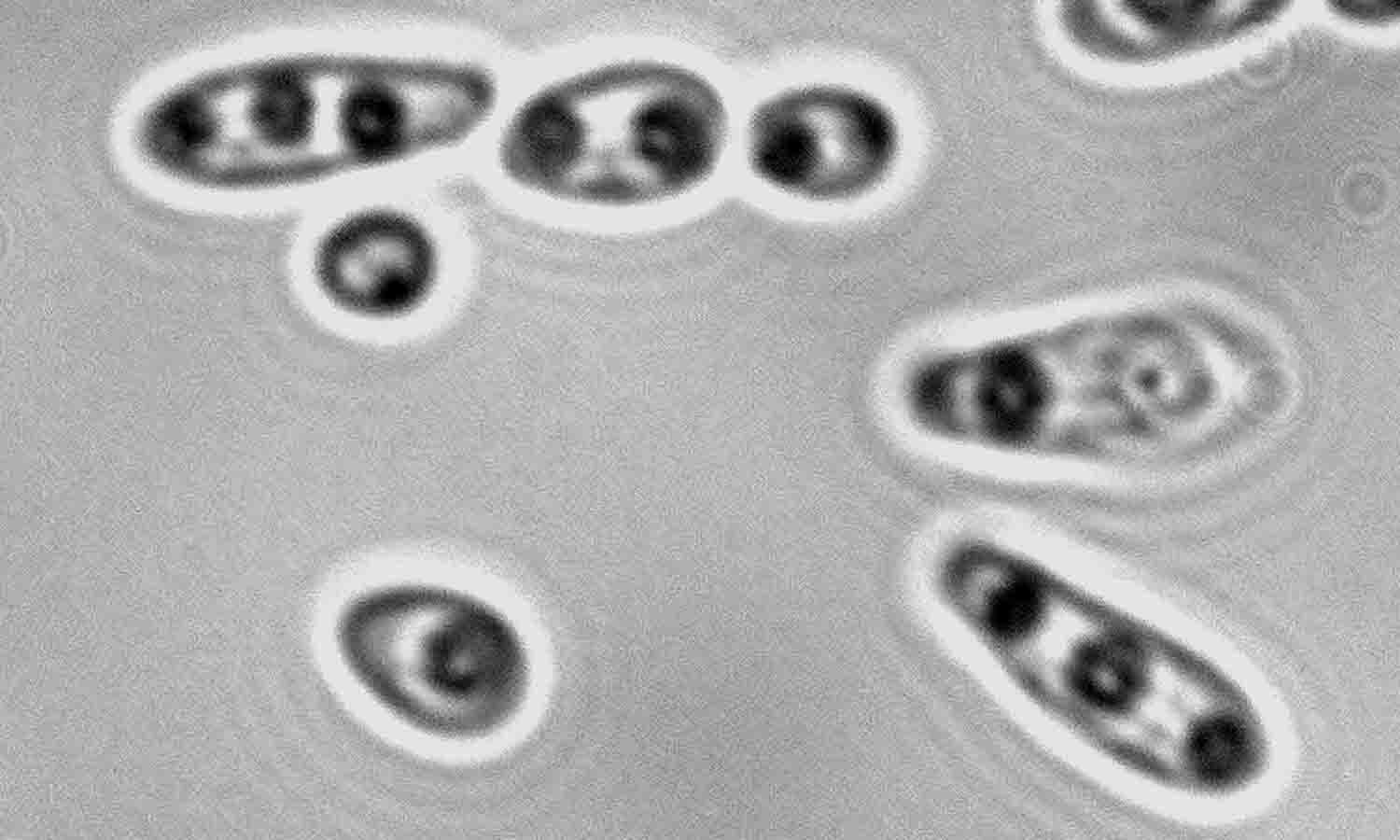Genus/species (aliases): Candida intermedia (Blastodendrion intermedium)
Classification: Basidiomycete; anamorph
Morphology:
Cell: multilateral budding; ellipsoidal to cylindrical, (2.4-6.4) x (3.2-7.2) µm, usually in chains; simple to elaborate pseudohyphae formed generally arranged in short tree-like branches with ovoid blastospores present.

|
 |
 |
 |
Colony:
- YPD: white to cream-colored, soft, dull, smooth or slightly wrinkled
- Malt agar: slow growing colonies with rough surface and irregular edges
- WL: large, white to cream colored colonies
- Spore: NA
- Zygote: NA
- Ascus: NA
Liquid Growth: C. intermedia disperses as single cells or in pairs.Liquid media promotes mycelial growth; a thick wrinkled pellicle is formed
Physiological Traits:
- Fermentation: Glucose +; Galactose +; Sucrose +; Raffinose v; Trehalose v
- Assimilation: Galactose; L-Sorbose; Sucrose; Maltose; Cellobiose; Lactose; Raffinose; Melezitose; Soluble starch; D-Xylose; D-Glucitol; D-Mannitol; Salicin; Variable use of: citrate; succinate; ribitol; arabinose, ribose,; no assimilation of nitrate; no growth in vitamin free medium requires biotin; uses as sole H source: Ethylamine, Lysine, Cadaverine
- Growth at 37°C: absent or variable
- Growth sensitivities: 10% NaCl: +; some strains can grow on 0.01% or 0.1% cycloheximide
- Chromosome bands: 6
Ecological Traits:
Found in soil, beer, and grapes. Also present on skin, in the throat, or in animal feces.
Distinguishing Features:
C. intermedia can produce ethyl alcohol. It grows poorly at 37°C
Role in wine:
Not common in microflora of grapes or winery flora; occurs mostly on humans. C. intermedia is capable of spoilage but is not a frequently occurring spoilage yeast in wine production
Sensitivities:
- SO: Candida species can reduce sulfites.
- Sorbate: no
- DMDC: Candida species can be controlled with 200-250 mg/L DMDC
- pH: prefers neutral pH, but has a wide range of functionalble pH.
- Acids: can grow in acid media of pH 1.8
- Ethanol: no
- Anaerobiosis: no
- Heat: The optimal temperature is 20-30°C.
